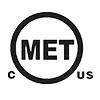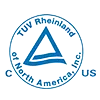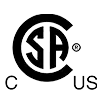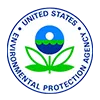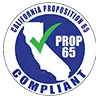Working in an industrial environment comes with many hazards and risks of injury. Having a well-stocked first aid kit readily available is an essential part of any industrial workplace safety program. At Yoo Shing, we understand the importance of equipping businesses with comprehensive industrial first aid kits to treat anything from minor cuts and burns to more serious injuries.
In this ultimate guide, we'll cover everything you need to know about industrial first aid kits including:
What should be included in an industrial first aid kit
OSHA and ANSI first aid kit regulations
Different types of industrial first aid kit configurations
Features to look for when buying an industrial first aid kit
Proper storage and placement of first aid kits
Developing workplace first aid policies and procedures
First aid kit inspection and restocking
The benefits of having industrial first aid kits
Whether you're looking to buy your first industrial first aid kit or want to optimize your existing workplace safety program, use this guide to help you provide your team with the best first aid preparedness.
What Should Be In an Industrial First Aid Kit?
Industrial working conditions pose various safety hazards not encountered in an office setting. The contents of a standard first aid kit may not fully address the injuries that can happen in environments with machinery, chemicals, and other risks.
The Occupational Safety and Health Administration (OSHA) sets minimum recommendations for what should be included in workplace first aid kits, but industries with higher hazards may require more extensive supplies.
Here are some essential items that should be in every industrial first aid kit:
Bandages: Assorted adhesive bandages and gauze pads are must-haves for cleaning and protecting cuts and scrapes. Include a variety of bandage sizes.
Antiseptic wipes: Antiseptic wipes help prevent infection by cleaning dirt and grease from minor wounds. They come individually wrapped for convenience.
Burn treatment: Burn gel and burn dressing pads provide quick relief and protection for minor burns.
Eye wash: Sterile eye wash helps remove dust, chemicals or other debris from the eyes. Look for individual use eye wash containers.
Trauma pads: These thick, absorbent pads stop bleeding from lacerations and puncture wounds.
Gloves: Latex-free gloves allow for safe treatment of injuries and reduce disease transmission.
CPR mask: CPR masks or face shields provide protection during emergency resuscitation.
Cold packs: Instant cold packs help reduce swelling and manage pain for sprains, strains and bruises.
First aid booklet: A first aid manual provides visual guidance for treating various injuries. It should be up to date with the latest protocols.
Additional first aid kit items like trauma scissors, tweezers, roller gauze, compression bandages, and an emergency blanket are also useful for treating injuries in an industrial facility.
OSHA and ANSI First Aid Kit Regulations
To help protect workers, OSHA and the American National Standards Institute (ANSI) have developed regulations and recommendations around workplace first aid kits. Employers should be aware of the following guidelines when putting together industrial first aid supplies.
OSHA First Aid Kit Requirements
OSHA sets legally binding occupational safety and health standards at the federal level. Under OSHA standard 1910.151, employers must provide "adequate first aid supplies at the worksite."
The OSHA standard does not define exactly what "adequate" means or list required contents. It only specifies that:
First aid kits must be easily accessible to workers
Employers should assess the hazards of the workplace when determining the contents of first aid kits
First aid supplies should be placed in weatherproof containers if work is performed outdoors
OSHA does rely on ANSI recommendations for suggested minimum fill lists. But overall, the agency leaves it up to employers to determine what first aid supplies are appropriate for their particular industry and hazards present.
ANSI First Aid Kit Recommendations
While ANSI does not set enforceable standards, its national consensus standards are considered industry best practice. ANSI and the International Safety Equipment Association (ISEA) have created a recommended list of supplies based on the number of employees at a worksite:
Class A Basic Kit (Recommended for 1-50 employees):
Absorbent compress 2
Adhesive bandages 16
Antiseptic wipe packets 10
Burn treatment packets 6
First aid guide 1
Latex-free gloves 2 pair
Sterile pads 4
Triangular bandages 1
Class B Recommended Supplies (for 51-100 employees):
Absorbent compress 4
Adhesive bandages 26
Antiseptic wipe packets 20
Burn treatment packets 10
First aid guide 1
Latex-free gloves 4 pair
Sterile pads 8
Triangular bandages 2
Class C Recommended Supplies (for 100+ employees):
Absorbent compress 6
Adhesive bandages 50
Antiseptic wipe packets 40
Burn treatment packets 15
First aid guide 1
Latex-free gloves 6 pair
Sterile pads 12
Triangular bandages 3
ANSI also suggests first aid kits include a cold pack, CPR mask, roller gauze, trauma pads, and trauma shears based on the specific hazards employees face.
Types of Industrial First Aid Kits
Industrial first aid kits come in a variety of configurations to meet different workplace needs:
Wall-Mounted Cabinets
Wall-mounted first aid cabinets provide centralized first aid access for a large facility and employee population. These cabinets come in different dimensions, with small ones working for up to 50 employees and large cabinets accommodating supplies for over 200 people. Wall-mounted first aid cabinets feature:
Visible and clear labeling
Basic contents for treating common injuries
Customizable interior with removable inserts and dividers
Lockable doors to prevent theft
Option for built-in sharps container
Portable Kits
Portable first aid kits are lightweight and easy to transport to different job sites or areas in a facility. They often come in soft cases with handles and include:
Carrying handle or strap
Compartmentalized interior to organize contents
Shoulder strap for hands-free carrying
Durable, wipeable exterior
Portable kits are good for maintenance, construction, landscaping, and other mobile crews.
Vehicle Kits
Vehicle first aid kits are designed to mount in a car, truck, van, or other vehicle cabin and withstand bumpy roads and extreme temperatures. Look for kits with:
Mounting straps or brackets
Waterproof case
Reflective patch for visibility
Compact design with essentials for treating injuries away from the workplace
This allows drivers to quickly access supplies at an accident scene.
Refills and Bulk Supply
Many manufacturers offer first aid kit refills and bulk supplies for restocking both wall-mounted and portable kits. Refills come packaged together for convenience and ensure you replace depleted items with the proper quantities.
Purchasing bulk supplies allows you to fully customize kits and avoid waste by only replacing exactly what was used. Stock up on bulk quantities of bandages, medications, ointments, and other necessities to have on hand.
Key Features for Industrial First Aid Kits
With various first aid kit types and builds available today, keep these key features in mind when selecting kits to meet your workplace safety needs:
Complete Compliance
Choose first aid kits that meet or exceed OSHA and ANSI standards for your number of employees. Look for kits that come with a compliance checklist or inventory list making it easy to confirm they contain recommended supplies.
Organized Contents
First aid kits with compartments, pouches, or inserts that separate and arrange supplies make it easier to quickly find needed items in an emergency. Avoid jumbled kits where contents can spill out.
Durable Construction
Select kits made of durable materials able to withstand tough industrial conditions such as waterproof hard cases or rip-resistant soft cases with reinforced stitching. Avoid flimsy kits.
Compact and Portable
For portable kits, look for streamlined designs with comfortable carrying handles or straps. Make sure the weight is reasonable when fully stocked for easy transport by hand.
Proper Packaging
All antiseptics, ointments, medications, and dressings should be individually sealed or wrapped to keep them sterile and protected. Adhesive bandages should peel easily from their packaging with one hand.
Intuitive Labeling
Kits with clearly labeled storage compartments, reflective patches on the exterior, and easy-to-read text on individual medical packages allow for fast identification when treating an injured worker.
Properly Storing and Positioning First Aid Kits
Where and how you store industrial first aid kits impacts their accessibility and longevity. Follow these guidelines on first aid kit placement:
Visible locations: Prominently display wall-mounted first aid kits or use signs to clearly point the way to kits. Avoid hidden areas.
Near high hazard areas: Position kits near machinery, chemical storage, or other high risk work zones for quick emergency access.
Quick retrieval: Make sure kits stored in cabinets can be retrieved in under 10 seconds. Kits should never be obstructed or blocked.
Accessible height: Wall-mounted kits should be installed so the top is around five feet above the ground for easy reach.
Distributed coverage: For larger facilities, distribute first aid kits throughout the building for coverage across different areas.
Vehicles: Secure vehicle-mount kits at eye level within driver's reach and clearly label the storage location.
Avoid Temperature Extremes: Do not store kits in extremely hot or cold environments which can damage contents.
Regular inspection should be conducted to confirm first aid kits remain properly placed for fast access when needed.
Developing First Aid Policies and Procedures
A written first aid policy establishes protocols for responding to injuries and medical emergencies. Well-defined policies promote quicker care and better outcomes when incidents occur.
Include the following in your workplace first aid policy:
Location of first aid kits and other supplies like AEDs and eyewash stations
Roles and responsibilities of designated first aid providers
Required first aid and PPE training
Emergency response procedures including contacting EMS
Process for incident reporting and investigation
Plan for maintaining and inspecting first aid kits
Provide annual first aid policy training to management and employees. Post reminders like flowcharts and signage from the procedures.
First Aid Kit Inspection and Replenishment
Industrial first aid kits require regular inspection and replenishment of used or expired supplies to stay compliant and ready to treat injuries.
Inspection Process
Create a standard schedule and checklist for inspecting all workplace first aid kits such as monthly or quarterly.
During inspections, confirm:
Tamper-proof seals are intact
Expiration dates are checked and contents replaced if expired
No signs of damage, dampness, or tampering
All items are accounted for according to inventory
Sterile supplies are sealed and in good condition
Restocking Depleted Items
Note exactly which supplies need replacement during inspection. Promptly re-stock any used or missing items according to OSHA/ANSI requirements.
Assign responsibility for kit replenishment and purchasing replacement supplies. Bulk packages make it easy to replace specific depleted quantities.
Routine Kit Replacement
For wall-mounted and vehicle kits, plan on complete first aid kit replacement every 3-5 years as harsh conditions can degrade cases and contents.
Portable kits may need replacement more frequently depending on use. It's cheaper to buy new pre-filled kits than fully restock every item.
With regular inspection and replenishment, workplace first aid kits can remain fully functional for emergencies.
The Importance of Industrial First Aid Kits
Workplace injuries often happen without warning in industrial facilities. Having well-stocked, compliant first aid kits located throughout your property allows for quick response to cuts, burns, debris in eyes, and other common issues before they escalate into major incidents.
Properly maintained first aid kits serve many purposes for safer industrial worksites:
Immediate access: Quick treatment minimizes injury severity and complications
Compliance: Avoids OSHA fines for inadequate or inaccessible first aid supplies
Faster recovery: Less severe injuries when treated promptly allow for a quicker return to work
Infection prevention: sterile dressings reduce the chance of wounds becoming infected
Liability protection: Demonstrates the company is taking reasonable safety precautions
Reassurance: Employees feel more protected and valued when first aid is available
Don't wait until an emergency to discover your first aid kits are out-of-date or missing vital components. Use this industrial first aid kit guide to implement a complete workplace safety solution for your employees. Trust Yoo Shing's high-quality kits and premium supplies to keep your workers protected.


